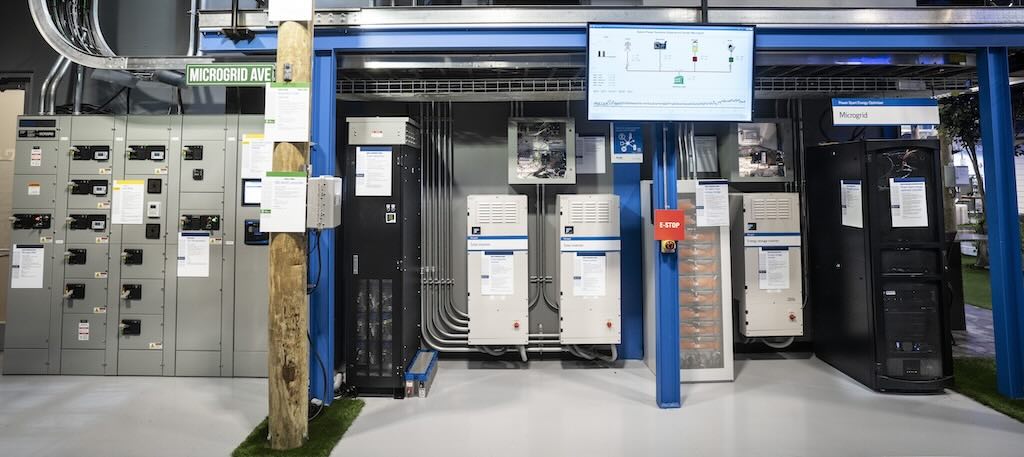The Rumford Paper Mill has seen its energy costs reduced thanks to aggressive energy management strategies

Like much of the rest of Maine, the town of Rumford is well known for the beauty of its natural surroundings. But for more than a century Rumford in particular has also played host to one of the largest paper mills in the Northeast, churning out as much as 550,000 tons of paper and 125,000 tons of pulp annually.
NewPage, which owns the Rumford facility and is among the leading domestic producers of printing paper and specialty paper, is working in a highly competitive and energy-intensive business. Through creative energy management strategies and the intelligent use of forecasting data, NewPage has transformed the Rumford mill’s energy costs from a burden to a source of competitive advantage.
Need to improve
Producing paper and pulp is an energy-intensive operation, and the Rumford mill features three boilers and a generator to provide for the thermal and electrical needs of the mill. The generator can put out as much as 100MW, or roughly enough to power 100,000 homes.
The Rumford mill was facing a crisis late in the last decade, though, because the primary fuel for the generator was coal, and the price of coal was steadily rising. According to the U.S. Energy Information Administration, the market price of coal rose nearly 90% from 2000 to 2010, and transportation costs drove the price even higher in Maine.
"The problem is transportation to get coal from, say, West Virginia up here to western Maine relies on diesel, rail, ship or truck, or any other transportation mode," explains Rick Abradi, the head of energy management at the Rumford mill.
Faced with rapidly increasing coal prices which jeopardized the Rumford mill’s competitiveness, NewPage assigned Rick Abradi the challenge of developing a strategy to bring overall energy costs under control.
Breaking down the problem
Abradi started by created three broad "buckets" for energy management strategies: demand, procurement, and conversion.
Demand would cover most of the approaches people usually identify with energy efficiency, the equivalent of adding insulation and replacing light bulbs in a house. On an industrial scale, it generally means finding ways to produce more pulp and paper with less steam and electricity.
A bigger cost impact, though, came from procurement—finding a way to diversify, away from expensive coal to cheaper fuel sources. Despite being able to use some of its own waste products as fuel, the Rumford mill’s generator still relied on coal as the single largest fuel source for the boilers.
With prices rising, diversification was the key to ensuring some measure of cost control.
The mill operates two circulating fluidized bed that suspends fuel in jets of air. The Rumford mill is able to burn readily available biomass from wood chips and a fuel called TDF—tire-derived fuel. Increasing the volume of these alternative fuel sources allowed Abradi to reduce coal’s share of total fuel consumption.
In addition, NewPage gained greater operational flexibility to adjust fuel sources based on market prices and availability, reducing the dependence on any single supplier or fuel type.
Generators, forecasts and using them the right way
With the fuel sourcing problem solved, the next challenge was optimizing “conversion.” A big part of this is making a determination of when and at what level to run the generator.
While the Rumford mill’s generator is more than capable of meeting its own needs, the plant sits within the region covered by electric utility Maine Central Power, and can just as easily draw power from the grid. When local power prices fall below what NewPage pays for generation costs, the plant can scale back its generator and instead draw from the grid.
With so much excess generating capacity, the mill can also export power out onto the grid. When demand on the grid is high and prices rise far enough above the cost point, NewPage is able to take advantage of the cost differential.
The biggest difficulty with trying to take advantage of the rise and fall of electricity prices is that it can be difficult to respond quickly to changes.
Barring any breakdowns, operators have a good idea how much power the mill will need, but it still takes as much as 15 to 20 minutes to change output from the generator, so any mistakes or delay can mean a missed opportunity.
This can be an even bigger problem for companies that only have the option of cutting back operations.
The answer here lies in power analytics.
Since the early 2000s, NewPage has turned to the energy information firm Genscape for daily forecasts of local power prices and regional power demand. Genscape’s teams of analysts and meteorologists provide highly accurate forecasting reports using a combination of neural network models, proprietary monitor data, and fundamental models.
When a morning forecast from Genscape calls for high real-time prices later in the day, the control room operators get the advanced notice to ramp up the generator and sell surplus power to the grid at a handsome profit.
"Sometimes when the price unexpectedly ramps up, we don’t see it right away. And due to the nature of our equipment we cannot react instantly," said Abradi. "So having a heads-up on that, the operators can anticipate that move."
Casting a small shadow
There’s another use of these types of power forecasts that can also have a dramatic impact on overall energy costs, namely, minimizing demand charges.
Every utility imposes some sort of charge for using its grid, fees that cover everything from maintenance to expansions and upgrades. Generally, utilities charge a fixed amount, distributed among customers based on their proportion of total usage when demand peaks during a given month.
NewPage has largely managed to significantly reduce its demand charges by using monthly forecasts to determine which days are likely to result in a usage peak and running the generator to reduce or eliminate net usage from the grid during those periods.
"(Before these reports) it was me and my fancy Excel spreadsheet I built on the back of an envelope, looking at the National Weather Service weather forecast," remembers Abradi. "Before that we didn’t worry about it much because the cost penalty was relatively minor, but these transmission charges are really starting to escalate around the region."
Easy as it might seem to avoid demand charges with an on-site generator, making guesses about when a new peak will occur comes along with very real costs.
Each hour that the generator runs during a “false alarm” is an hour’s worth of expensive fuel being burned. Guess wrong too often and these costs can begin to pile up. Much the same can be said when production is curtailed to lower a business’s usage.
Lessons for the rest of us
Most industrial plants don’t have a 100MW generator and the ability to sell surplus power to the grid, but that doesn’t mean they can’t benefit from the same energy management strategies employed by NewPage.
Demand charges are an unfortunate fact of life for every industrial facility, and reducing load during forecasted peak demand periods can go a long way toward reducing overall energy costs.
Similarly, economic demand response programs provide a way for industrial facilities with the flexibility to shift or curtail their load to “sell power onto the grid” during periods of high forecasted prices without requiring an on-site generator.
System operators such as ISO-New England and PJM offer lucrative economic demand response programs which reward businesses for reducing their electricity usage at times of high prices. Not only do participants avoid paying for power during high-price periods, they are actually paid the prevailing wholesale price for every kilowatt-hour they reduce below their baseline level.
By using a forecasting service to accurately predict the days and hours of highest real-time prices, a participant can maximize the financial benefit from these programs and provide a benefit to the grid at the same time.
NewPage’s Rumford mill stands as a testament to the significant savings that can be achieved through comprehensive energy management and accurate forecast data. In a highly competitive industry like paper, even modest reductions in energy costs can mean a major swing in profitability.
Hudson Gilmer is vice president of commercial markets at Genscape.



